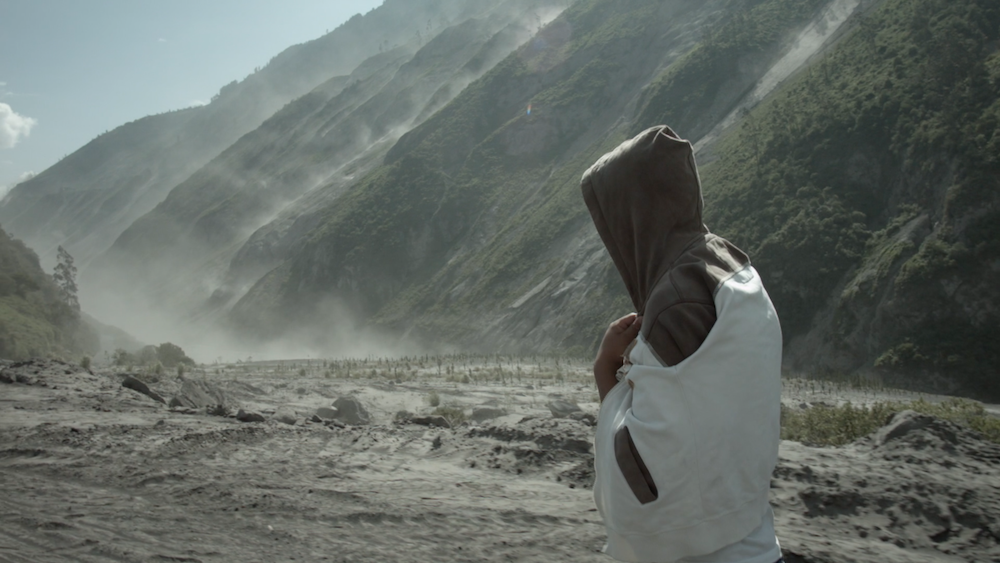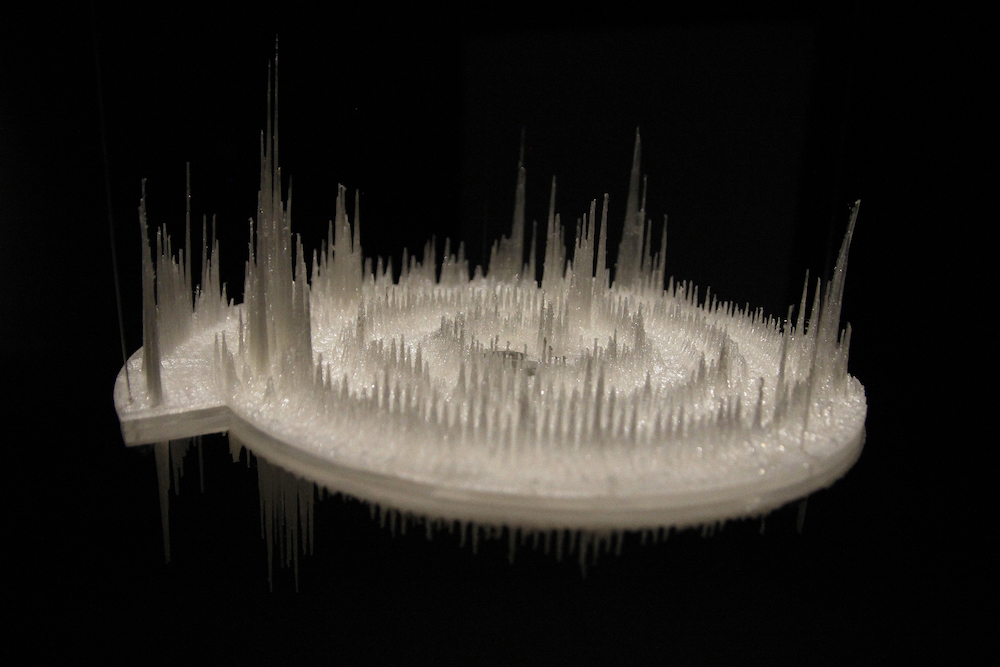
Bienalsur was conceived two years ago by Diana B. Wechsler, the director of the art department at Buenos Aires’ UNTREF university, and Aníbal Jozami, the Rector of UNTREF and director of the university’s museum, (the MUNTREF).
Bienalsur has taken place in 12 South American countries to date, as well Cuba, Benin and various European countries. “We like to work without borders. We made some application to international funds, especially the UNASUR for the South America. We organized partnerships with institutions and the budget is shared among these institutions,” Wechsler explained. This association with museums gave rise to a cultural cooperation that didn’t previously exist in South America.
Wechsler and Jozami did an open call without any theme. “We started out two years ago, rethinking the modality of the Biennale without center and periphery, and trying to work with every associated place as a center,” said Wechsler.

It is a statement about the traditional scheme of the Biennale. As Jozami affirms: “There isn’t any theme. This is art as it exists in the moment and the participating artists don’t have to adapt to one subject.” Among the 2,543 worldwide artistic proposals they received, 429 artists were selected. This curatorial experience aims to stand apart from the mainstream international art world and to bypass the art market logic, by gathering emerging and well-known artists from all over the world.
Among the established names who are participating is Joel Andrianomearisoa, who reflects on the two borders of the Atlantic Ocean, in South America and in Africa, with a project untitled Le, la tour du monde (The World tour). Taking place at Porto Alegre in Brazil, in Buenos Aires in Argentina, and in Cotonou, (at the Zinsou Foundation and the museum of Ouidah), hundreds of billboards will be used to narrate a love story between the continents. The artist has also created postcards you can send between these three cities. Two other pieces by Andrianomearisoa will be exhibited in Africa: The Labyrinth of Passions and Sentimental Negotiations
. His love story is one that is full of sentimental, social and political anecdotes recalling the notions of distance, time and borders.

The Argentinian artist Graciela Sacco is also taking part, with an intervention at the Buenos Aires airport and at the central railway stations of Rio, Sao Paulo, and Tucumán, asking, “Who is guilty of what?” This generic question is intended to interrupt the daily inertia, and act as a trigger for critical thinking. Meanwhile the Portuguese artist Pedro Cabrita Reis will present a 9-tonne steel line in front of the neoclassical façade of the Faculty of Law in Buenos Aires, aiming to rethink the place the law has in Argentina. French artist Christian Boltanski, has prepared a new piece in a desert next to the Atlantic Ocean, where he is creating a new myth for Patagonia, via an installation of three large trumpets that are activated by the strong winds in the region, and will communicate with the whales at sea.
Among the emerging artists for Bienalsur, meanwhile, The Andean Pavilion of the young Ecuadorian artist Paul Rosero Contreras for Buenos Aires, is a series of 6 videos running in a loop and 3 sculptures. The artist who was previously exhibited at the 57th Venice Biennale at the Antarctic Pavilion started his project 2 years ago. He has shot the 6 videos with performers and recorded the signals of volcanos all along the Andes in Ecuador, in Galapagos, in Colombia, in Chile and in Argentina. With a software that the artist built himself, the seismic waves were coded and translated into 3D models and printed with a 3D printer. Thus the invisible signals of the volcanos become visible through the objects, presented in refrigerated capsules as if frozen in time.

HAWAPI is another of this year’s commissioned artists: an independent Peruvian art organization that each year invites a group of artists to deal with unexpected locations to develop site-specific public artworks. The site this year was El Triangle Terrestre, a small triangle of disputed land on the Peru border, the subject of conflict with Chile since the signing of the 1929 treaty after the war. The participants were equal parts Peruvian and Chilean, as well as 2 international participants from Israel and United States. The exhibitions in Lima and in Valparaiso in Chile in September will be based on their experience in this contested and symbolic piece of land.
For the launch week of Bienalsur in September at the MUNTREF in Buenos Aires, you can expect a happening of the French artist Arnaud Cohen, who will present an iteration of his Venice Biennale project at the Swiss Pavilion this year. The performance is a private dinner curated by the artist’s Foundation ASFI (Art Speaks For Itself), to connect art professionals who desire to meet. A second dinner will be organized the following day with the press, and later, there will be a public conference. After the dinner, the guests have a task: they have to curate an exhibition of art works that must conflict visually with the logos of big firms or institutions. Cohen aims to create a ‘resistance network’ against the art market—something that fits Bienalsur’s aims very well.






